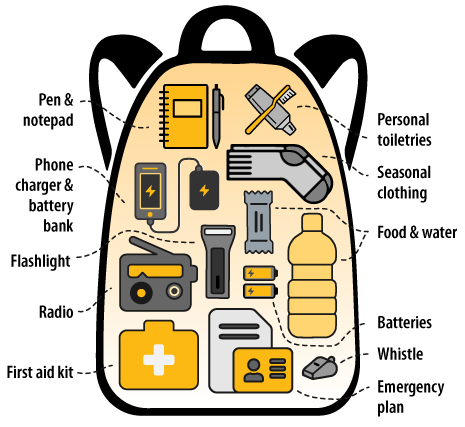The current heavy smoke conditions in the City of Elliot Lake are caused by Sudbury Fire #017 at the Massey Tote Road.
Elliot Lake EDO Steve Antunes says there is no current active fire within Elliot Lake’s nine townships but adds Fire Chief John Thomas is in communication with the Ministry of Natural Resources and Forestry about the fire progress and the public will be updated immediately if there is any cause for concern or evacuation.
He adds, outside of the current events, the city advises the public to be prepared for possible shelter-in-place or evacuate orders and have a 72-hour kit available containing medicines, water, flashlights, change of clothing, blanket and other vital supplies.
Antunes adds the City of Elliot Lake’s Emergency Control Group has an evacuation plan in place and specific instructions to the public will change depending on if an area needs evacuation.
Stay tuned to the City’s website, Facebook, Twitter, and Instagram pages for the latest updates. Up to date information will be available through the Moose radio stations, 99.3 and 94.1 on your FM dial and the City’s social media pages and website during an emergency.
Emergency kit supply list
Put supplies in one or 2 containers, such as plastic bins or duffel bags. Store them in an area of your home that’s easy to get to, such as a hall closet, spare room or garage.
- Non-perishable food: minimum three-day to one-week supply, with a manual can opener
- Water: four litres per person, per day for drinking and sanitation
- Phone charger, power bank or inverter
- Battery-powered or hand-crank radio
- Battery-powered or hand-crank flashlight
- Extra batteries
- First-aid kit and medications
- Personal toiletries and items, such as an extra pair of glasses or contact lenses
- Copy of your emergency plan
- Copies of important documents, such as insurance papers and identification
- Cash in small bills
- Garbage bags and moist towelettes for personal sanitation
- Seasonal clothing, sturdy footwear and emergency blanket
- Dust masks
- Whistle
- Help/OK Sign (PDF): Display the appropriate side outward in your window during a disaster.
Make a grab-and-go bag
A grab-and-go bag is a small emergency kit that’s easy to take with you, in case you need to leave right away. It’s a good idea to make grab-and-go bags for your home, workplace and vehicle.
Include:
- Food (ready to eat) and water
- Phone charger and battery bank
- Small battery-powered or hand-crank radio
- Battery-powered or hand-crank flashlight
- Extra batteries
- Small first-aid kit and personal medications
- Personal toiletries and items, such as an extra pair of glasses or contact lenses
- Copy of your emergency plan
- Copies of important documents, such as insurance papers and identification
- Cash in small bills
- Local map with your family meeting place identified
- Seasonal clothing and an emergency blanket
- Pen and notepad
- Whistle

Have plenty of water
Most people need four litres of water per person per day, but some people may need more. For example, children, people who are nursing or people who are sick. Hot temperatures can double water needs.
Pets need about 30 mL of water per kg of body weight per day. For example, a cat or small dog needs at least half a cup of water each day.
Water must be safe to drink
Purchase bottled water for an emergency kit. Keep it in its original container in cool and dark place that’s easy to reach.
You should not:
- Open the water until you need it
- Use water that’s past the expiry or “best before” date printed on the bottle
- Use water from toilet tanks or bowls, radiators, waterbeds, swimming pools or spas
If your regular water supply becomes contaminated, you can purify and bottle your own water. If you use a water filtration device, it’s still a good idea to store some bottled water as well.


